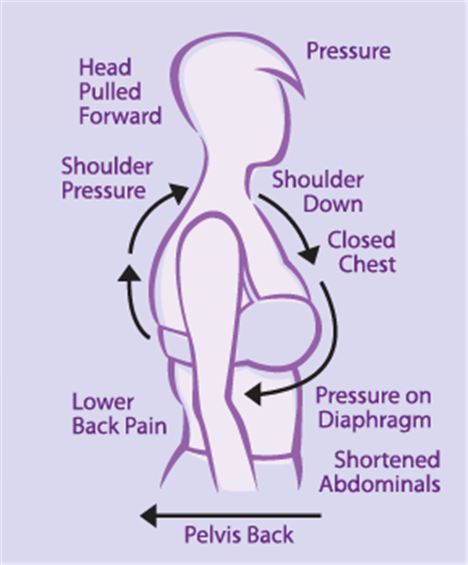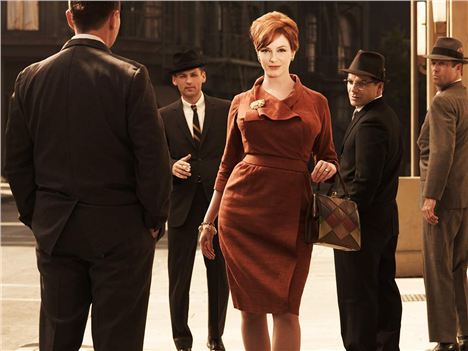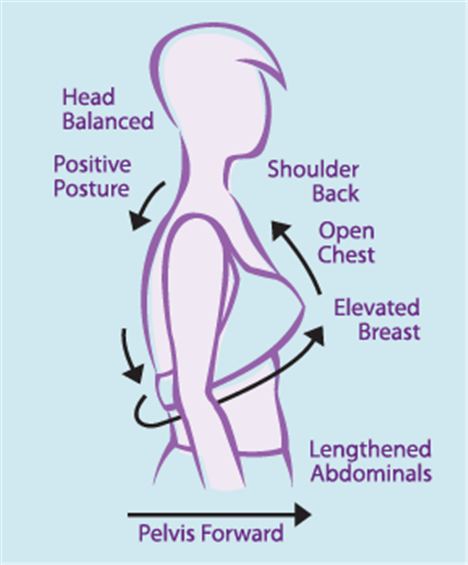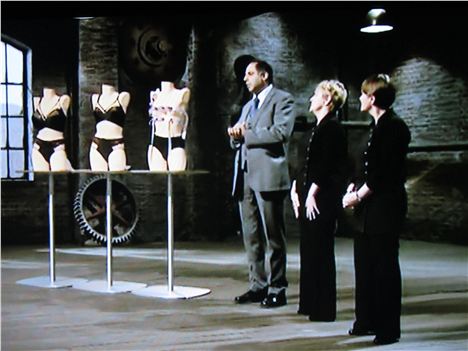THE above image may look like ordinary bras, but they are in fact anything but.
"I realised it’s actually the bra that’s not right, so I set about trying to find out what is a 34, 36 and 38? And what exactly is an A, B, C, D?"
What you’re looking at are Optifit bras - a concept developed by Sue McDonald and her sister Linda over 25 years and completely obliterated in one fell swoop on the latest episode of the BBC’s Dragons Den.
“It was surreal” said Sue. “You come out of the lift and you look at them sitting there. It was just like watching them on the telly. I wasn’t nervous at all though – we always knew it would be a risk taking it on the show because it is for women only and is a product that truly goes against the current grain.”
At the time of my visit to the Optifit studio in Uppermill, Saddleworth the show hadn’t yet been aired and whilst Sue remained tight lipped about the outcome, her passion and drive for her invention would have suggested the full investment of £40,000 plus 10 per cent of shares to one or more of the Dragons.
Unfortunately it wasn’t to be as Duncan Bannatyne scoffed “resistance from the industry means your product doesn’t work” whilst Deborah Meaden turned her nose up at the idea of having to (God forbid) measure her own breasts. A puzzled looking Kelly Hoppen appeared to be working out how to count.
It was over before it had even begun, but watching you couldn’t help get the impression that the reaction from the Dragons represented everything that’s wrong with Society’s view of breasts in general.
 Duncan Bannatyne isn't a boob man
Duncan Bannatyne isn't a boob man
As Sue explained: “Breasts are taboo. Historically foundation wear was designed to support the fashion designs of that particular decade and we still treat our breasts as a fashion accessory now. Yet talk to a woman who has had breast cancer and it hits home that you’ve got to look after your breasts. Problem is, no one teaches you how to do that.”
What Dragon’s Den probably edited out of the footage was that Sue undertook a research degree to get to the bottom of the numerical and alphabetical sizing system of measuring bra size which, for the 80 per cent of us who have been wearing the wrong bra size our entire adult lives, just doesn’t add up. Remember our article on finding the right size bra? There was and still is no right size bra.
“There’s no consistency whatsoever” said Sue. “After gaining a lot of experience I realised it’s actually the bra that’s not right, so I set about trying to find out what is a 34, 36 and 38? And what exactly is an A, B, C, D?
“When measuring for a bra, you measure around your rib cage then add four to an even number and five to an odd number. That’s your bra size. So if you measure 29 inches around the rib cage, you’ll add five and that makes you 34. But why?
“Then you measure around the fullest part of your breast. If that measures say 34 inches, it is the same as the ribcage size so therefore you’re an A. If you measure 35, that is one inch bigger than your rib cage so you’re a B, and so on. But again, why?”
 Conventional bras are breast focussed
Conventional bras are breast focussed
Sue’s research led her back through history, through the “pointy scary ones and the roundy bouncy ones” as women dressed their breasts in order to reflect the ideal of the time, from Marilyn Monroe to Twiggy to Pamela Anderson.
“The fashion industry is not interested in your body and how it works. It’s like painfully tight foot binding in China, damaging neck rings in parts of Africa and Asia and of course corsets in Victorian times which crushed your soft organs. We’re never good enough as we are.”
Even more alarmingly, Sue found conventional bras to be adapted from men’s WWI military uniform measurements.
Bra measurements were originally designed using the male chest circumference and adding a few inches depth to allow for the volume of the breast. However, Sue believes this is not only a completely ludicrous way of measuring a part of the body that has no defined or uniform shape, but that it is also based on a deeply unrealistic view of the female form.
 Christina Hendricks in 1960s TV series Mad Men. The actress had to wear the sculpting, boosting and restraining undergarments of the period.
Christina Hendricks in 1960s TV series Mad Men. The actress had to wear the sculpting, boosting and restraining undergarments of the period.
“Breasts fall down” Sue exclaimed. “Everybody is asymmetrical. All chest walls are different. Yet they measured half way between a man’s shoulder and elbow to create the point of nipple for a woman’s breast?”
It sure does sound bizarre when you dig deeper into the measuring process we still use today, yet the system has never been updated or so much as been questioned. It would seem women are happy to stick to making their breasts conform which brings us on to Sue’s ultimate bra evil: underwiring.
“Metal rods will not hold your breasts up” she explained, likening it to trying to hold a bag of jelly with a piece wire. Of course, the jelly would seep over at every available opportunity and you only have to observe a top heavy woman running to the bus stop in a flimsy underwired bra to see the jiggly effect.
“The wires were put there to try and force your breast to fit a particular shape. We put our hand in our underwired bras and pull our breast up to make it fit to that shape. By doing this you’ve actually detached your own breast from your body.
“Women complain about breast tenderness at the time of the month and yet we’ll shove a metal rod on that delicate part of the breast. You need to be aware of how your breast is working because it is fundamental to breast health.”
 Optifit bras are back focussed
Optifit bras are back focussed
Turning to my own breasts, now sat fairly uncomfortably in an underwired bra I’ve had for about six years, the reality of what Sue’s fought long and hard to convince the lingerie industry to re-examine, hit home.
An old scar under my left armpit where ill fitting underwire had once dug in to my flesh, plus the fact my straps were pretty loose and an overall lack of structure in the cups meant that I may as well be wearing nothing.
Nothing, according to Sue, would in fact be better than “that horrible thing that’s doing nothing for you” which is something you’ll rarely hear from a seasoned bra fitter.
Standing in front of the mirror topless, I feel rather disgraced that like many women I have taken to guess work when it comes to my bra size over the years, depending what’s on the rack at TK Maxx. I’ve certainly never given much consideration to the delicate glandular tissue I’m stuffing into whichever pretty little number happens to be on offer.
“I’m not looking at them,” said Sue, pointing at my neglected breasts.
“Breasts don’t have any shape at all. It’s the body they sit on that has the shape and that’s what you should fit – the body. Then we project the breasts away from the body without any pressure. This bra supports the internal network of ligaments.”
Measuring and fitting me with an Optifit bra took just a few minutes and it was the most supported my breasts have ever felt. An Optifit bra is based on three measurements taken with a patented elastic strap using colour, letter and number combinations to define frame, depth and volume, and fitting can be adjusted for even minimal asymmetry. You can see how to use the Optifit measure and put on the bra in the videos below.
Optifit bras sit low on the waist line at the back rather than below your shoulder blades as with a conventional bra. This makes a lot of sense as you can immediately feel your back supporting your breasts and your whole posture changes as a result. Being breast aware is very empowering.
The Optifit bra contains no wire yet projects your nipples up to where most of us would like them to stay. The shape under clothes is therefore more perky because the Optifit bra doesn’t allow your breasts to flop down or to the sides. There’s also no chance of overspill, no matter what your size, as the bra material sits way above your nipples. As they are made to measure, there’s no start and end with sizes either. No breasts are too big or small to be supported.
There was only one down side from my experience with Optifit and that’s to do with the aesthetics.
Ironically while it’s so gentle on the breast and breaks away from those darn WWI measurements, it sways more toward looking like a robust bit of military kit than conventional bras. While the ladies do have some designs that are prettier, they’d be the first to admit their focus is not on fashion but breast health. That doesn’t unfortunately solve the problem of how I can make this perfect fitting bra sit well beneath a low cut thinly strapped vest.
The Dragons, with adequate investment could have helped make Optifit more appealing to the masses and took Sue and Linda’s hard work to the level it deserves, where women get to take ownership of their own bodies without compromising on style.
But for now, just like Optifit, it’s onwards and upwards for the ladies as they continue the conversation that I and every other female on the planet should be so very happy they started.
Optifit bras start from £49.99 and are made to measure, using Opti-measure which costs £4 (the price is deducted from your first order). Visit www.optifitbra.co.uk for more information.
Follow Lynda on Twitter @lyndamoyo




